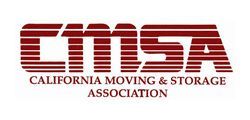October 3, 2025
Understanding the mechanics of moving operations is crucial for anyone planning to relocate. This article delves into the specific methods and strategies employed by moving companies to handle local and long-distance moves. We will explore the logistics, challenges, and coordination efforts involved, providing a comprehensive understanding of what goes on behind the scenes. Moving companies play a pivotal role in transforming a stressful event into a manageable process. By dissecting the operations, we can prepare better for any move.
1. Distance and Time Management
Distance is one of the most significant differentiators between local and long-distance moves. Local moves typically occur within a limited geographic area, usually less than 50 miles, allowing for quicker completion and more flexibility with scheduling. On the contrary, long-distance moves span greater distances, often involving consecutive days spent on the road. Consequently, the time management for long-distance moves must be precise to account for unexpected delays or challenges en route. The efficiency with which moving companies manage time can significantly affect customer satisfaction and operational success.
Efficient time management on moving day depends heavily on experience and careful planning. Local moves benefit from the moving crew's familiarity with the area's traffic patterns, potential roadblocks, and efficient route planning. In contrast, long-distance moves require contingencies for inclement weather, road construction, and overnight lodging for the crew. For both move types, establishing clear timelines and consistently communicating with customers ensures expectations are managed, and operations remain smooth. Customers' need for proximity to family and larger living spaces often drives these moves.
Furthermore, the strategic planning of time utilization is essential for successful relocations. Moving companies often use sophisticated scheduling software to track available resources and allocate them appropriately. They forecast time by anticipating delays at loading and unloading points, especially during peak seasons. This accuracy is essential because, according to the National Association of Realtors, people moved in 2024 primarily to be closer to family and friends (30%) and to get more home for their money (21%), meaning careful planning is necessary to meet these significant life transitions. Maintaining a balance between flexibility and precision is key to successful time management in moving operations.
2. Regulatory Environment
The regulatory environment significantly impacts local and long-distance moves, presenting distinct challenges for moving companies. Local moves are generally subject to fewer regulations, and companies may only need to deal with city or county transportation rules. In contrast, long-distance moves often involve crossing state lines, which introduces complex federal regulations. Companies must comply with regulations governed by the Federal Motor Carrier Safety Administration (FMCSA), which oversees the safety and operation standards for interstate movements. For companies, understanding and adhering to these regulations is critical to avoid penalties and ensure smooth interstate operations.
Beyond federal requirements, each state can impose additional rules for movers entering its jurisdiction, including weight limitations and specific permits. These varied requirements necessitate thorough research and preparation by moving companies to prevent any legal or logistical complications. Handling regulatory nuances efficiently helps avert legal issues and maintains a high standard of service quality. Knowledge of the legal landscape allows moving companies to navigate bureaucratic hurdles with minimal disruption to their operations. Adhering to these regulations is essential not just for compliance but also for maintaining customer trust and safety.
Regulatory differences also impact cost, scheduling, and operational maneuverability. Taxes, tolls, and emission regulations vary across different locations, directly impacting costs. Additionally, mandatory rest stops and limited operating hours per driver on long-haul routes affect scheduling. Experienced moving corporations integrate these regulatory factors into their planning to create seamless transitions for clients. The challenge for companies is to efficiently combine compliance with operational efficacy to maintain profitability and drive customer satisfaction. These layered complexities underscore the importance of a competent team and well-defined procedures for both local and long-distance relocations.
3. Cost Structure
The cost structure of moving services varies markedly between local and long-distance moves, driven by numerous factors. Local moving costs are typically calculated based on an hourly rate, considering the time taken, crew size, and potential additional services like packing. Conversely, long-distance moves are typically priced based on weight, distance, and any special handling requirements. Fuel costs, tolls, and travel permits add an extra layer of complexity to long-distance move pricing. Accurate estimation and transparent communication with clients about potential costs are crucial for effective price structuring.
Another essential component affecting costs is insurance and liability coverage, particularly crucial for long-distance relocations. For local moves, basic insurance often suffices, offering minimal coverage for damaged or lost belongings. However, long-distance moves necessitate comprehensive coverage due to the increased risk over extended travel. Offering tiered insurance packages allows companies to cater to varying client preferences and financial considerations. Transparent fee structures and clear insurance options enhance client trust, a vital aspect of customer satisfaction in the moving industry.
Cost management for both local and long-distance moves must consider potential hidden expenses. Companies must factor in travel-related expenses for the crew, such as meals and accommodation, especially for extended trips. Unexpected delays in long-distance moves can increase these costs, emphasizing the need for buffer budgeting. Clients' primary reasons for moving include proximity to family and obtaining more living space for their financial investment, underscoring the need for companies to balance cost efficiency with quality service delivery. Thus, strategic financial planning and clear cost communication become critical in managing client expectations and company operations effectively.
4. Resource Allocation
Resource allocation is a critical factor distinguishing local from long-distance moves. Local moves require deploying fewer resources, often involving a single vehicle and a small crew. This setup allows for swift mobilization, flexibility in scheduling, and rapid project completion. By contrast, long-distance relocations necessitate a more robust allocation of vehicles, drivers, and logistical support to accommodate extended travel times and regulatory variances. Effective resource allocation is crucial in delivering customer satisfaction and maintaining operational efficiency.
Allocation strategies also include the planning of manpower according to the complexity of the move. For instance, a local move may include a basic team of packers and loaders, while a long-distance move might require a dispatcher, multiple drivers, and coordination with storage facilities. Moving companies prioritize crew expertise and experience to handle these diverse task assignments smoothly. By matching crew skill sets with the demands of a move, companies optimize efficiency and mitigate potential disruptions. Focused resource allocation ensures that resources are not only utilized effectively but that the service quality improves with experience and expertise.
The practice of allocating and managing resources relies heavily on foresight and analysis. Companies must assess their vehicle fleet capability and ensure availability to meet job demands, especially since moving demands can vary seasonally. They analyze potential resource utilization, factoring in variables such as client schedules, mover availability, and potential contingencies like mechanical breakdowns. The desire for families to relocate closer to relatives and friends, achieving financial value in larger homes, requires adept resource planning to ensure that moves are organized, efficient, and punctual. Service optimization through prudent resource allocation remains a cornerstone of operational success in the moving industry.
5. Planning and Pre-Move Preparation
Proper planning and preparation are essential for both local and long-distance moves, impacting overall satisfaction and operational efficiency. For local relocations, preparation often includes a detailed inspection of the site, inventory assessment, and tailored packaging solutions. Companies coordinate with clients to finalize schedules, ensuring readiness and anticipation of any specific challenges involved, such as elevator reservations or HOA restrictions in urban settings. This meticulous planning ensures that each move proceeds smoothly and responds dynamically to any last-minute client requirements.
Be sure to reach out to Commander Moving Inc today for more information on our professional moving companies!





